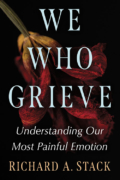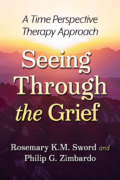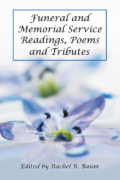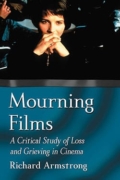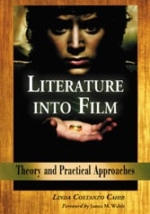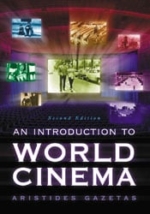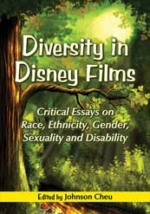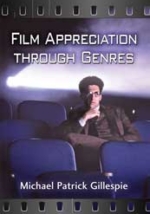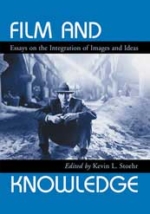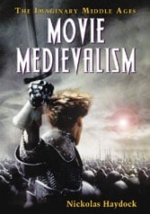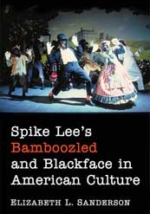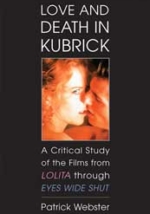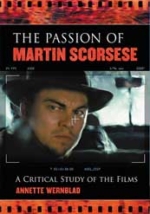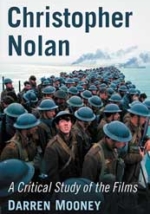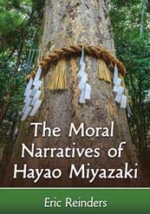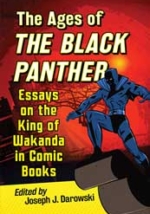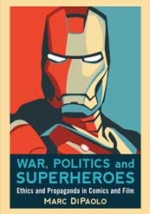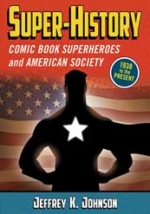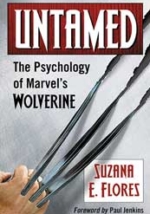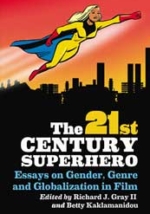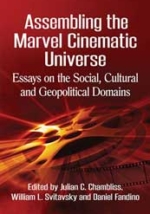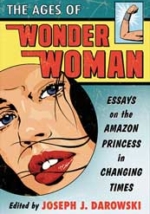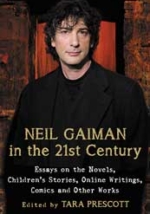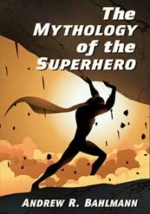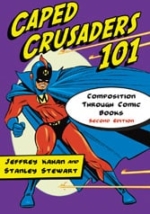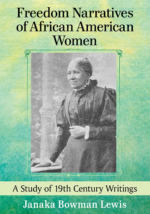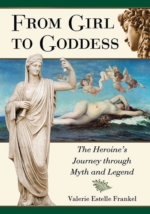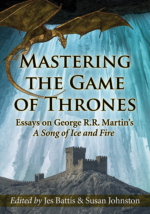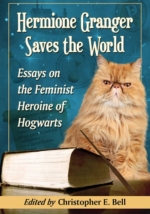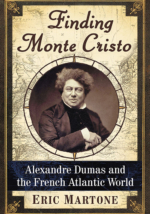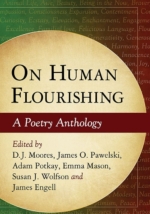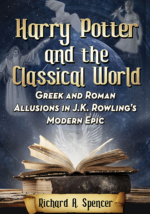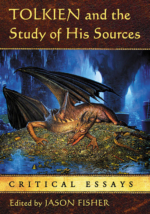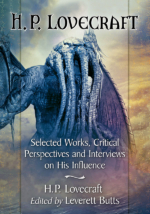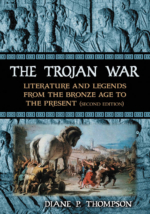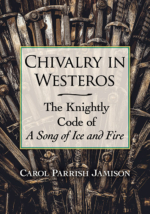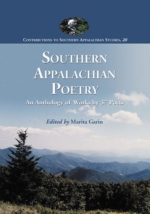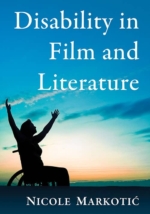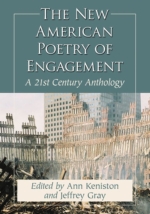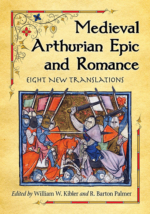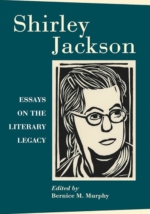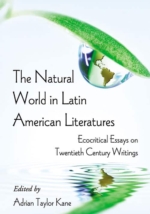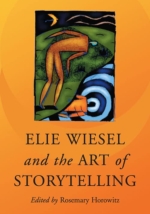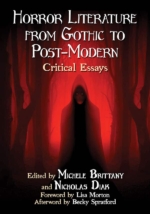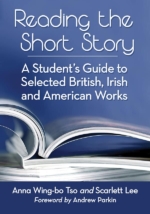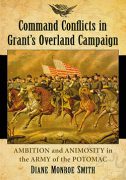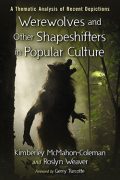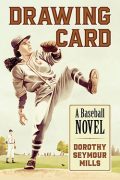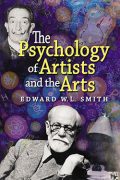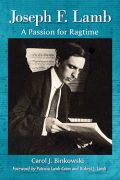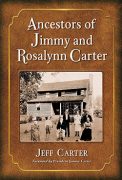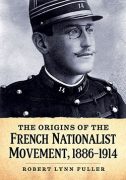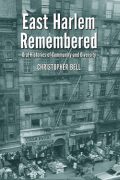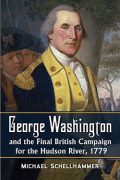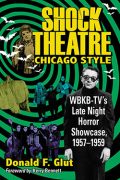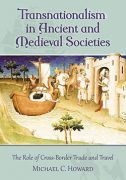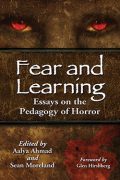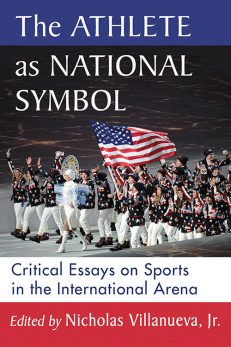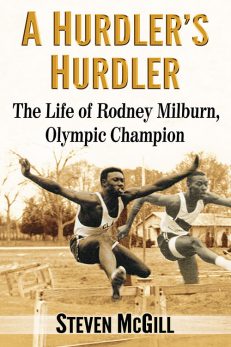We get it: someone in your household wants to bring in a tree while another hasn’t put away the Halloween decorations yet. We suggest using this liminal time to get started with your holiday shopping (and reading). Many of our readers look forward to our traditional post–Thanksgiving holiday sale to fill their shelves, nightstands and gift bags. This year, instead of waiting around for Black Friday, we’re opening up early access to you, our loyal readers and followers, as a way of saying “thank you!” for celebrating with us all year round. From now through Cyber Monday, November 28, get a Santa–sized 40% off ALL titles with coupon code HOLIDAY22! Don’t delay, because when early access ends, the discount will drop to the standard 25%. Happy reading!
Category: Medieval Studies
Fall 2021 New Books Catalog Available Now
 Our Fall 2021 new books catalog is now available—click to see what our authors have in store for the coming months!
Our Fall 2021 new books catalog is now available—click to see what our authors have in store for the coming months!
Women’s Studies Sale and New Catalog
 Women made 2020 a banner year for diversity and inclusivity. In sports, representation on and off the field erupted with the leadership of Kim Ng, Sarah Fuller and Katie Sowers. Scientists Emmanuelle Charpentier and Jennifer A. Doudna jointly earned the Nobel Prize in Chemistry. And in politics, women like Cori Bush, Sarah McBride, Yvette Herrell and others were elected to ever-diversifying legislatures, while Kamala Harris ascended to the highest elected position a woman has yet to hold. To honor Women’s History Month and to nurture the path forward, we’re offering 20% off our catalog through March 31st with coupon code WOMEN20.
Women made 2020 a banner year for diversity and inclusivity. In sports, representation on and off the field erupted with the leadership of Kim Ng, Sarah Fuller and Katie Sowers. Scientists Emmanuelle Charpentier and Jennifer A. Doudna jointly earned the Nobel Prize in Chemistry. And in politics, women like Cori Bush, Sarah McBride, Yvette Herrell and others were elected to ever-diversifying legislatures, while Kamala Harris ascended to the highest elected position a woman has yet to hold. To honor Women’s History Month and to nurture the path forward, we’re offering 20% off our catalog through March 31st with coupon code WOMEN20.
BOOK REVIEWS: The People of the Sagas
Here are the latest book reviews for Icelanders in the Viking Age: The People of the Sagas by William R. Short.
• “Provides information on the daily lives, culture, history, and society of the Icelanders in a clear and well-structured fashion that invites and informs modern readers. The 13 chapters are concise, and clearly laid out sections allow readers to review specific themes or read the work as a whole. Using both literary and archaeological sources, Short presents a detailed, succinct, and informative overview of Icelanders of the saga age as well as the sagas themselves. Readers are enticed into further exploration of Viking–age Iceland with the inclusion of detailed chapter notes and recommendations for further readings. This useful introduction to the Viking age is an essential companion to the medieval narratives…. The author’s in-depth research makes this a compelling, informative addition to almost any collection dealing with the sagas or the Viking age. Highly recommended. General and academic collections, all levels.”—Choice
• “Informative…Short has done an excellent job…most interesting…I unhesitatingly recommend this book to anyone with even a shred of interest in the Viking era…faultless…tells a coherent story…this is a book stuffed full of interesting material for anyone interested in the sagas, the Viking age, the Icelandic Commonwealth, and early contact with the New World. Highly recommended”—Armed and Dangerous
• “A warning to readers. You may find you need to hide your copy of this book…chapters on pretty much all aspects of daily life…. You don’t need to be a specialist in anthropology or history to understand…illustrated with numerous black and white photographs of Iceland and Icelandic artifacts, drawings and maps…enjoyed it very much. You’ve got to hand it to McFarland as they publish some fascinating books”—Green Man Review
• “A perfect companion or an introduction to reading the sagas…very easy to read, and covers many topics in the life of the people in Iceland during those times…covers religion, laws, feuds, home life, and the settlement, among other topics…truly gives you an overview of what everyday life was like…[Short’s] research is flawless, and his sources are well-documented…bibliography is impressive…very well-indexed…entertaining, easy-to-read and very educational”—Lögberg-Heimskringla
• “Well-structured, easily understandable and practical…digs deep into a wide range of archaeological and literary sources…presents readers with a realistic account of life in the saga age…excellent…thorough and accurate…interesting…especially helpful”—Iceland Review
• “Riveting exploration…a solid addition”—Midwest Book Review
• “Fresh and interesting…a most readable book”—SMART: Studies in Medieval and Renaissance Teaching
• “Comprehensive but accessible history…. All aspects of society are covered including laws, conflict, domestic work, agriculture, gender roles, trade and production. Blending literature, legal codes, chronicles and archaeology and embellishing them with pictures, many of which he took himself. Short’s book is a perfect companion to the study of the Icelandic sagas”—Reference and Research Book News
Fall 2020 New Titles Catalog Available Now
 Our fall New Titles catalog is now available, featuring 184 forthcoming books from our authors. Browse now!
Our fall New Titles catalog is now available, featuring 184 forthcoming books from our authors. Browse now!
New to Kindle, March 2020
The following titles are now available on Kindle:
|
A Century in Uniform: Military Women in American Films
|
|
African American Entertainers in Australia and New Zealand: A History, 1788–1941
|
|
Apocalypse TV: Essays on Society and Self at the End of the World
|
|
Apocalyptic Ecology in the Graphic Novel: Life and the Environment After Societal Collapse
|
|
Autogenic Training: A Mind-Body Approach to the Treatment of Chronic Pain Syndrome and Stress-Related Disorders, 3d ed.
|
|
Baseball in Europe: A Country by Country History, 2d ed.
|
|
Chasing the Bounty: The Voyages of the Pandora and Matavy
|
|
Colonels in Blue—Missouri and the Western States and Territories: A Civil War Biographical Dictionary
|
|
Electric Trucks: A History of Delivery Vehicles, Semis, Forklifts and Others
|
|
Ethics After Poststructuralism: A Critical Reader
|
|
Film History Through Trade Journal Art, 1916–1920
|
|
Final Battles of Patton’s Vanguard: The United States Army Fourth Armored Division, 1945–1946
|
|
George “Mooney” Gibson: Canadian Catcher for the Deadball Era Pirates
|
|
Girl of Steel: Essays on Television’s Supergirl and Fourth-Wave Feminism
|
|
Hollywood’s Hard-Luck Ladies: 23 Actresses Who Suffered Early Deaths, Accidents, Missteps, Illnesses and Tragedies
|
|
Italian Crime Fiction in the Era of the Anti-Mafia Movement
|
|
Japan’s Spy at Pearl Harbor: Memoir of an Imperial Navy Secret Agent
|
|
Joe Quigley, Alaska Pioneer: Beyond the Gold Rush
|
|
John Derek: Actor, Director, Photographer
|
|
Kenny Riley and Black Union Labor Power in the Port of Charleston
|
|
Managing Organizational Conflict
|
|
Nick McLean Behind the Camera: The Life and Works of a Hollywood Cinematographer
|
|
Parenting Through Pop Culture: Essays on Navigating Media with Children
|
|
Philip K. Dick: Essays of the Here and Now
|
|
Quaker Carpetbagger: J. Williams Thorne, Underground Railroad Host Turned North Carolina Politician
|
|
Rhode Island’s Civil War Dead: A Complete Roster
|
|
Rosalie Gardiner Jones and the Long March for Women’s Rights
|
|
Rosenblatt Stadium: Essays and Memories of Omaha’s Historic Ballpark, 1948–2012
|
|
Sacred and Mythological Animals: A Worldwide Taxonomy
|
|
Sailing Under John Paul Jones: The Memoir of Continental Navy Midshipman Nathaniel Fanning, 1778–1783
|
|
Section 27 and Freedman’s Village in Arlington National Cemetery: The African American History of America’s Most Hallowed Ground
|
|
Sicily on Screen: Essays on the Representation of the Island and Its Culture
|
|
Springsteen as Soundtrack: The Sound of the Boss in Film and Television
|
|
Taking Fire!: Memoir of an Aerial Scout in Vietnam
|
|
The 6th Michigan Volunteer Infantry in the Civil War: A History and Roster
|
|
The Civil War in the South Carolina Lowcountry: How a Confederate Artillery Battery and a Black Union Regiment Defined the War
|
|
The General Aviation Industry in America: A History, 2d ed.
|
|
The Man Who Made Babe Ruth: Brother Matthias of St. Mary’s School
|
|
The Showgirl Costume: An Illustrated History
|
|
The USS Swordfish: The World War II Patrols of the First American Submarine to Sink a Japanese Ship
|
|
The Women of City Point, Virginia, 1864–1865: Stories of Life and Work in the Union Occupation Headquarters
|
|
Themes in Latin American Cinema: A Critical Survey, 2d ed.
|
|
Understanding Nazi Ideology: The Genesis and Impact of a Political Faith
|
|
Virtual Tribe: Indigenous Identity in Social Media
|
|
Why the Axis Lost: An Analysis of Strategic Errors
|
2020 Women’s Studies Catalog Now Available
 Celebrate Women’s History Month with our new women’s studies catalog!
Celebrate Women’s History Month with our new women’s studies catalog!
CONFERENCES: Upcoming MLA and PCA events
McFarland is exhibiting at a number of regional and national conferences in the coming months, and conferees are encouraged to take the opportunity to peruse our books and meet an editor. Schedule an appointment by emailing us in advance (Layla Milholen, Gary Mitchem, or Dré Person), or stop by the McFarland booth in the exhibit room for a casual conversation with an editor.
Popular Culture Association in the South Sept 26-28, Wilmington, NC, Layla Milholen
Association for the Study of African American Life and History Oct 3-5, Charleston, SC, Dré Person
Midwest Popular Culture Association Oct 10-13 Cincinnati, OH, Layla Milholen
American Folklore Society Oct 16-19, Baltimore, MD, Gary Mitchem
South Central Modern Language Association Oct 24-26, Little Rock, AR, Gary Mitchem
Mid-Atlantic Popular Culture Association Nov 7-9, 2019, Pittsburgh, PA, Gary Mitchem
Film and History Nov 13-17, Madison, WI, Dré Person
National Women’s Studies Association Nov 14-17, San Francisco, CA, Layla Milholen
South Atlantic Modern Language Association Nov 15–17, Atlanta, GA, Gary Mitchem
American Philosophical Association Jan 8-11, Philadelphia, PA, Dré Person
Modern Language Association Jan 9-12, Seattle, WA, Gary Mitchem
Cinema & Media Studies
Comics & Graphic Narratives
Literature
New Fantasy Catalog (and Sale!) Available Now
 Modern? Urban? YA? Medieval? Dark? Weird? Fairy Tale? Delve into the fantastic with McFarland’s latest catalog of fantasy books, and, through Sept 30, get 20% off your order with coupon code FANTASY19!
Modern? Urban? YA? Medieval? Dark? Weird? Fairy Tale? Delve into the fantastic with McFarland’s latest catalog of fantasy books, and, through Sept 30, get 20% off your order with coupon code FANTASY19!
Fall 2019 New Books Catalog Available Now
 Our Fall 2019 new books catalog is now available—browse our authors’ new and forthcoming titles today!
Our Fall 2019 new books catalog is now available—browse our authors’ new and forthcoming titles today!
McFarland 40th Anniversary Sale
 We’re turning 40, and we’re celebrating with a special fortieth anniversary sale! Through June 30, get a 25% discount on ALL books when you use the code ANN2019. And if you’ll be in our area (Ashe County, North Carolina, in the beautiful Blue Ridge Mountains), we’d love to see you at our open house event on Friday, June 14. Thank you for supporting our first 40 years—we look forward to celebrating many more birthdays with you.
We’re turning 40, and we’re celebrating with a special fortieth anniversary sale! Through June 30, get a 25% discount on ALL books when you use the code ANN2019. And if you’ll be in our area (Ashe County, North Carolina, in the beautiful Blue Ridge Mountains), we’d love to see you at our open house event on Friday, June 14. Thank you for supporting our first 40 years—we look forward to celebrating many more birthdays with you.
McFarland Turns 40

On June 14, 2019, McFarland will celebrate its fortieth anniversary with an open house party. From noon to five, our campus at 960 Hwy 88 W, Jefferson, NC will be open to the public with finger food, conversation and tours available, and many of our authors will be in attendance. To stay up-t0-date with event information, follow our event page. Below is a brief company history, with personal thoughts, by founder and editor-in-chief Robert Franklin.
McFarland Publishers Now Forty Years Old
by Robert Franklin
McFarland’s history (founder, Robbie Franklin, me): My close friends Biff and Alicia Stickel were burned out special ed teachers in Connecticut, early 70’s. What to do? Back to the land! They (and their little daughter Maranatha Shone Stickel) drove south till they loved the vibe and the scenery and wound up living on Peak Road from 1972 through part of 1978 (and birthing Micah Stickel). Alicia played piano at the local Baptist church and they were cofounders of the Creston Co-op. I visited them in ’72 (instantly fell for the land and people, the forefinger car salute, the almost drinkable river) and again every year after, and when wife Cheryl Roberts came into my life in 1975, we visited. Soon I was bragging about Ashe County to everybody – “If your car breaks down, the very next person to come along will stop and ask if you need help.” I hope a few readers can recognize the Stickels’ name (he goes by Richard now; they live in Toronto). They are the reason McFarland was begun in Ashe County. We present band of publishers, about fifty in number, owe them great honor.
I did not learn till after we moved here in 1979 that my Revolutionary War ancestor Lieutenant Robert McFarland, after whupping the king at Kings Mountain, lived up here in the 1790s. He then went overmountain to become the first ever sheriff of Greene/Washington County, Tennessee. (I was born in Memphis.)
McFarland & Company, Inc., Publishers is our official name. Founded in April 1979 right here. I had been the executive editor of a smallish scholarly publisher in New Jersey; my mentor/boss/friend Eric Moon (a charismatic Brit) knew before I did it was time for me to go off on “my own” (very misleading words!). The local Ashe County newspaper was failing by 1978 and at first I thought, o.k., I’m an editor type, maybe I can start up a new one. Between summer and Christmas the local fellow David Desautels decided the same thing and very successfully started The Jefferson Times. We became friends and McFarland’s earliest two or three books (including a biography of Soviet leader Brezhnev) were typeset using off-hours time on that new newspaper’s equipment. Katy Zell Taylor was our first fulltime employee (Ashe Central H.S. yearbook editor!) and did a lot of typesetting and correcting. Dental Care in Society was our first published book, in 1980 (ask me some day).
After deciding up in New Jersey to stay with book (versus newspaper) publishing, I phoned the Jefferson Post Office in February 1979 to set up a box number mailing address – they said people had to apply in person. Whew! So I flew from Newark to Tri-Cities, Tennessee (what did I know?), rented a car, drove to Jefferson (hours!), filled out a form, got back in the car, drove back to Tri-Cities, and got back home not long before day was done.
A couple of months later, on April 1, 1979, Cheryl and I packed our former life stuff (including hundreds of books—heavy!) in a small U-Haul, attached it to our VW bug, and began to drive south, the Stickels’ Ashe County on our minds.
My ninth-grade homeroom friend (Toledo, Ohio), Mike Strand, had helped with some financial and emotional support and we stopped at his place in Maryland overnight. Armed with an Ashe return address, I had written several hundred letters (yes!) on a yellow pad on my knees in the front seat while Cheryl drove, and Mike arranged for a nearby university used-to-weird-hours thesis typist to type them all overnight; we mailed them April 2 and drove on. We were headed to my parents’ (retired librarians) house in Charlottesville, with me again writing several hundred short letters on my lap. We had arranged for a similar heroic overnight typing fest (the two days: 905 letters to all the authors I had addresses for, saying my former employer will take good care of you, they’re wonderful publishers—But if by any chance they turn you down for something, give us a shot!).
The U-Haul was too much for the Bug and our left rear wheel came OFF 20 miles north of Charlottesville—but stayed in the wheel well (having nowhere else to go), behaving violently. Definitely exciting (it was my stint at the wheel). We lost two or three days; I split logs for my parents’ fireplace.
In Ashe County finally, we scooped up some reply mail from authors. Already! And we soon secured a sweet farmhouse in Dillard Holler (landlord Jesse Dillard; Mom-figure Clyde Dillard; horse-plus-himself quarter-acre-garden plower Jones Dillard). The Dillard families taught us a great deal about what being “conservative” actually means. (One day Jesse turned up with several hundred fence rails he stored near “our” (his) house; no immediate need, but “I got ’em for 25¢ each.” They stayed stacked for years…) The birth of our sons Charles (in ’81), Nicholas (’85) and William (’89) certainly emphasized the Dillards’ lessons. (Jesse routinely tossed hay bales up into pickup trucks in his 80’s. Lemme be him!)
McFarland itself started out next to the H & R Block office, near the florist, in Jefferson, a small space but enough for our first couple of years. The Jefferson Post Office turned out, under our loyal friend Charles Caudill, to be one of our greatest early assets. He was so supportive as McF struggled through ignorance of mass mailings, foreign registered packages (we learned together!), “library rate” book mailings, etc. McFarland moved in 1981 or ’82 to the Mountain View shopping center between the towns and quickly expanded there. In 1982 we lucked out by having Rhonda Herman agree to join the tiny staff, doing all the “business” stuff while I coddled authors, edited manuscripts and coached the typesetters. High school senior Cynthia Campbell became a stalwart and sixteen year old Cherie Scott was a wow of a typesetter, along with Katy Taylor, on our new typesetting equipment. Within three years we were producing 40 or so new books a year (in 2018 the total was nearly 400).
Meanwhile, the people of Ashe County all around us showed interest, great surprise (“A Publisher in Ashe County?” read one huge Jefferson Times headline), and affection. Highly significant was Hal Colvard, repeatedly trusting us, at Northwestern bank, another wonderful early friend of McFar. We warmly greeted each other on Saturday mornings at the post office for many years after he retired.
By 1984 we’d moved to our present location, which became five buildings on both sides of the road. We’re technically inside Jefferson town limits. We took Mackey McDonald’s trim brick ranch house, whacked walls left and right, pushed out here, there… Years later we added a second floor – my joke is, the main building now has more roof lines than an Italian hill village.
We are, or were, a library-oriented scholarly and reference book publisher. (We’ve grown much more into a straight-to-people operation today but libraries are still a critical component of our efforts.) Two of our earliest works were Library Display Ideas by my sister Linda Franklin and Free Magazines for Libraries, by Adeline Mercer Smith: they were terrific sales successes. Another 1982 biggie was Anabolic Steroids and the Athlete by William M. Taylor, M.D. We hit that topic just as it exploded nationwide. One of the most memorable early works was Keep Watching the Skies! by Bill Warren (1982). This huge book expertly, humorously covers in amazing depth every American science fiction movie of the 1950s and a lot of Hollywood Big Names spoke highly of it in print. We were famous! (Well, the author was…)
McFarland was an early strong supporter of the local arts scene. (There are hundreds of paintings hanging in four of our buildings.) Cheryl Roberts and I founded the publication ARTS/DATES for the Arts Council in 1980 or 1981, and for more than a decade paid all its expenses as it grew grander and ever more useful. Loyal Jane Lonon (Arts Council head) wangled twice for us an N.C. Governor’s Business Award for the Arts and Humanities (go to Raleigh; shake hands; pose for photos; eat dinner).
I joined the strong, active Ashe County Little Theatre and played Dracula for them in 1981, sporting fangs crafted by the late Brett Summey, who became a good friend, now truly missed. Jane Lonon and I wowed the crowd in The King and I and Tom Fowler and I rolled them in the aisles in Greater Tuna. When I played Macbeth, the high school English teacher promised extra credit to student attendees.
McFarland’s output grew rapidly—by the 1990s we were producing hundreds of new titles each year and our staff had doubled, then tripled in size. Margie Turnmire had arrived in the mid–’80s, a beautiful soul and a very smart lady: director of finance and administration. In 1995 the Ashe County Chamber of Commerce honored us with a Business of the Year award (I believe we were the third such) and in 1998 The Wall Street Journal ran a feature article on us, showing that we are a bit unusual in our range of offerings. We have a commanding position in, for example, Vietnam combat memoirs, chess history, baseball (teams, eras, bios), automotive history and popular culture (film, TV, comics, literature…). We’ve done many reference books (though with Wiki-Google etc. now such works are uneconomical to produce); a Library Journal book of the year was local John Stewart’s African States and Rulers in 1989. Lots of Civil War, World War II, American/European/World history, literary criticism. Authors from all over the world. That part’s fun! As I write this we have published 7,800 titles.
We had busted out of our onsite warehouse and used the old Ashe County Jail on Buffalo Road for several years in the 80s! Ultimately we had to move our shipping operation into the building next to the Arts Council owned by Jim Reeves. On its outer wall facing the Arts Center we had Jack Young do the town’s first mural (now painted over): “Ashe County through the Ages.” Finally, Mike Herman built us an entirely new warehouse across the road from our main building in about 1990. Fourteen years later, then-vice-president Rhonda Herman (now president) moved the company onto firmer financial footing by arranging to install state-of-the-art printing equipment in that warehouse (we’d always used out-of-house printing firms).
Cheryl and I love Ashe County. We love the people. We love the trees, the river. (We came in first in the Mixed Expert class canoe race four or five years ago!) I even like the curves driving 23 miles to and fro our home to work (we live practically on the Tennessee line, up in the Flatwoods). The finger salute still works and the tire zing helps me think through business challenges. Our three boys, Charles, Nicky and William, also revere their place of birth. McFarland has about 50 employees, all of whom are exceptionally talented. When I got here to start the company, I truly had my pick of some of the best talent available anywhere, and I mean Anywhere. Our typesetters know every Hungarian or Swedish accent mark there is!
The local merchants have become business partners. Local artists have paintings hanging in our offices. The restaurants are great for business lunches. The weather—sublime (I learned to fell trees and the art of minimizing the lifting and stacking of logs our first year here); I like winter! Mike Herman built our house and the numerous renovations of our current space—impossible to imagine a better job. Stan Barker did some fabulous stone walls at our home. I feel both cozy and exhilarated just getting up in the morning! Ashe County, we’re for you!
McFarland is having an open house (snacks, drinks, tours) starting at noon on Friday, June 14th. We want to show our thanks to a community that has nurtured us for 40 years. Come one, come all!
Biographies and Memoirs Catalog and Sale
 McFarland’s biographies and memoirs cover the fascinating life stories of both iconic personalities and quiet heroes. On sale now, browse hundreds of titles from history, sports, movies, music, science & technology, literature, military history, transportation and more. When you order direct from our website using the coupon code BIOGRAPHY, print editions of all biographies, autobiographies and memoirs are 20% off now through February 15.
McFarland’s biographies and memoirs cover the fascinating life stories of both iconic personalities and quiet heroes. On sale now, browse hundreds of titles from history, sports, movies, music, science & technology, literature, military history, transportation and more. When you order direct from our website using the coupon code BIOGRAPHY, print editions of all biographies, autobiographies and memoirs are 20% off now through February 15.
Spring 2019 New Books Catalog Now Available
 Our spring 2019 new books catalog is now available—click here to browse our forthcoming titles!
Our spring 2019 new books catalog is now available—click here to browse our forthcoming titles!
Holiday 2018 Sale—Get 25% Off All Books!
 The holidays are a special time at McFarland—in addition to publishing scholarship, many of us also participate in the tree harvest, as Ashe County produces more Christmas trees than any other county in the United States. If you live in the Southeast, you may have a little bit of McFarland in your living room right now! This season, please consider putting some McFarland under the tree for the readers in your life. To make your holiday shopping easier, we’re offering 25% off of ALL books through the end of the year! On our website, use coupon code HOLIDAY18, or call us at 800-253-2187. For inspiration, browse our new catalog of of gift ideas for readers. Happy holidays from your friends at McFarland!
The holidays are a special time at McFarland—in addition to publishing scholarship, many of us also participate in the tree harvest, as Ashe County produces more Christmas trees than any other county in the United States. If you live in the Southeast, you may have a little bit of McFarland in your living room right now! This season, please consider putting some McFarland under the tree for the readers in your life. To make your holiday shopping easier, we’re offering 25% off of ALL books through the end of the year! On our website, use coupon code HOLIDAY18, or call us at 800-253-2187. For inspiration, browse our new catalog of of gift ideas for readers. Happy holidays from your friends at McFarland!
King Arthur Sales Starts Now
 What is known of the legendary King Arthur is mostly derived from folklore and literature. Though today, one is just as likely to have been introduced to King Arthur by a cartoon boy pulling a sword from a stone. You’ll find books covering all disciplines in our new King Arthur catalog.
What is known of the legendary King Arthur is mostly derived from folklore and literature. Though today, one is just as likely to have been introduced to King Arthur by a cartoon boy pulling a sword from a stone. You’ll find books covering all disciplines in our new King Arthur catalog. Fall 2018 New Books Catalog Available Now
 Our Fall 2018 catalog is now available—click here to see our authors’ forthcoming books!
Our Fall 2018 catalog is now available—click here to see our authors’ forthcoming books!
New Spring 2018 Catalog Available Now
 Our Spring 2018 New Books catalog is now available—click to see what our authors have in store for the new year!
Our Spring 2018 New Books catalog is now available—click to see what our authors have in store for the new year!
Gen Con 2017
Gen Con may be sold out, but McFarland is just getting started—visit our booth in the exhibit hall, where the best scholarship on gaming and pop culture is on sale now!
San Diego Comic Con 2017
We’re back in San Diego for another Comic Con—stop by our booth in the exhibit hall for the best in pop culture scholarship!
Weekly Deal: Arthur, King of the Britons
 This week, through May 14, 2017, get 20% off all books about King Arthur when you use the coupon code ARTHURIANA!
This week, through May 14, 2017, get 20% off all books about King Arthur when you use the coupon code ARTHURIANA!
Warriors and Wilderness in Medieval Britain: From Arthur and Beowulf to Sir Gawain and Robin Hood
Religion in Britain from the Megaliths to Arthur: An Archaeological and Mythological Exploration
The Chivalric Romance and the Essence of Fiction
Chivalric Stories as Children’s Literature: Edwardian Retellings in Words and Pictures
The British Heroic Age: A History, 367–664
The Glory of Arthur: The Legendary King in Epic Poems of Layamon, Spenser and Blake
Hengest, Gwrtheyrn and the Chronology of Post-Roman Britain
King Arthur’s European Realm: New Evidence from Monmouth’s Primary Sources
The Holy Grail on Film: Essays on the Cinematic Quest
Evidence of Arthur: Fixing the Legendary King in Factual Place and Time
Arthurian Animation: A Study of Cartoon Camelots on Film and Television
Glastonbury and the Grail: Did Joseph of Arimathea Bring the Sacred Relic to Britain?
The Druids and King Arthur: A New View of Early Britain
Chrétien de Troyes and the Dawn of Arthurian Romance
Medieval Arthurian Epic and Romance: Eight New Translations
Cinema Arthuriana: Twenty Essays, rev. ed.
Arthurian Figures of History and Legend: A Biographical Dictionary
Arthurian Legends on Film and Television
Movie Medievalism: The Imaginary Middle Ages
The Historic King Arthur: Authenticating the Celtic Hero of Post-Roman Britain
Sir Gawain and the Classical Tradition: Essays on the Ancient Antecedents
The Grail Procession: The Legend, the Artifacts, and the Possible Sources of the Story
King Arthur in Popular Culture
The King Arthur Myth in Modern American Literature
The Holy Grail: The Legend, the History, the Evidence
Gen Con 2016
We’re in Indianapolis for Gen Con 2016—visit McFarland in booth 345!
April 2016 Newsletter
Our April 2016 newsletter is now available—if it’s not in your inbox, and you’d like to receive our newsletters in the future, please take a moment to subscribe!
Hurry to take advantage of our holiday sale!
Take Advantage of our Holiday Sale!
 Still shopping for holiday gift ideas? Check out our holiday catalog, and get 30% off your order of two or more books with the coupon code HOLIDAY2015!
Still shopping for holiday gift ideas? Check out our holiday catalog, and get 30% off your order of two or more books with the coupon code HOLIDAY2015!
CONFERENCE: Gen Con Time!
 It’s that time of year again! McFarland is in Indy for Gen Con: the original, longest-running, and best-attended gaming convention in the world! It’s no small thing to keep up with gamers from all 50 states and more than 40 countries, but we’ll do our best.
It’s that time of year again! McFarland is in Indy for Gen Con: the original, longest-running, and best-attended gaming convention in the world! It’s no small thing to keep up with gamers from all 50 states and more than 40 countries, but we’ll do our best.
CONFERENCES: Comic-Con Gallery
Ashe County: Where McFarland Resides
Authors, customers, friends, and fans: if you’ve ever wondered what McF’s mountain town is like, have a look at this neat response about our area from a recent vacationer. (A special nod, too, to our Boondocks friends who regularly support us in a number of ways.) We love where we live!
CONFERENCE: ConCarolinas
It’s no secret that we at McFarland are fans of sf and fantasy (and horror, gaming, cosplay, and all the rest!). So we’re very excited to attend this year’s ConCarolinas in Concord, NC., May 29-31. Klingon Karaoke, anyone? See you there!
CONFERENCE: Medieval Studies
One of our favorite times of year is the chance to dwell among 3,000+ of the world’s most knowledgeable medievalists. This week McFarland is participating in the 50th annual International Congress on Medieval Studies in Kalamazoo.
Ireland and Irish-interest books
Naomh sásta lá patrick ar!
We hope you’ve got your green on! To help celebrate the day, we’re offering a 20% discount on all our Ireland and Irish-interest offerings now through Sunday, March 22nd.
WEEKLY DEAL: Tolkien Studies
 McFarland & Company, at your service! (Thank you, Bilbo, for teaching us proper etiquette.) While we’d like to offer you all ale, seed-cake, mince pies, buttered scones, apple tarts and cheese, we do have some fine scholarship about Tolkien to share (links listed below). And in lieu of burgling a dragon’s hoard for you, we’re extending a 20% discount with the coupon code HOARD. This “weekly” deal is good through New Year’s. (New deal coming January 2, 2015.)
McFarland & Company, at your service! (Thank you, Bilbo, for teaching us proper etiquette.) While we’d like to offer you all ale, seed-cake, mince pies, buttered scones, apple tarts and cheese, we do have some fine scholarship about Tolkien to share (links listed below). And in lieu of burgling a dragon’s hoard for you, we’re extending a 20% discount with the coupon code HOARD. This “weekly” deal is good through New Year’s. (New deal coming January 2, 2015.)
Tolkien and the Study of His Sources: Critical Essays
J.R.R. Tolkien, Robert E. Howard and the Birth of Modern Fantasy
The Evolution of Tolkien’s Mythology: A Study of the History of Middle-earth
The Hobbit and Tolkien’s Mythology: Essays on Revisions and Influences
Tolkien and the Modernists: Literary Responses to the Dark New Days of the 20th Century
Picturing Tolkien: Essays on Peter Jackson’s The Lord of the Rings Film Trilogy
The Body in Tolkien’s Legendarium: Essays on Middle-earth Corporeality
Tolkien and Shakespeare: Essays on Shared Themes and Language
Tolkien in the New Century: Essays in Honor of Tom Shippey
Middle-earth Minstrel: Essays on Music in Tolkien
CALL FOR REVIEWERS: Tales of Superhuman Powers
 Are you a book review editor, reviewer, or folklorist interested in receiving a media copy of Tales of Superhuman Powers: 55 Traditional Stories from Around the World? McFarland has a supply of review copies available upon request. Contact us via our review copy request form, filling out the form completely, to receive your copy.
Are you a book review editor, reviewer, or folklorist interested in receiving a media copy of Tales of Superhuman Powers: 55 Traditional Stories from Around the World? McFarland has a supply of review copies available upon request. Contact us via our review copy request form, filling out the form completely, to receive your copy.
Csenge Virág Zalka, a Hungarian storyteller, has collected 55 foltktales from around the world about supernatural abilities like superhuman strength, invulnerability, flying, heightened senses, speed, invisibility, healing, agility, precognition, telepathy, fire manipulation, teleportation, water powers, and shifting. These tales represent powers that people have dreamed of, conjured up and strived for through the ages. Many of the powers are present in popular culture, making the superheroes who wield them the direct descendants of characters such as the princess who could see through walls or the invulnerable Isfandiyar. Zalka excluded stories about magic or about gods with divine powers, and focused on less well-known stories. She included information on similar heroes, the ability in the story, sources of the powers, the origin of the story, teachings in it, the recommended age group, sources, variants, and comments.
#folklore #superheoes #comics #popculture
BOOK AWARD: Mythopoeic Society's Award for Inklings Studies
Congratulations to author Jason Fisher whose Tolkien and the Study of His Sources was awarded the Mythopoeic Society’s Mythopoeic Scholarship Award for Inklings Studies for 2014. Terrific work!
THROWBACK THURSDAY: King Arthur for the Classroom
 It was fall semester 1991 that I acquired two prized possessions: Pearl Jam’s Ten and the “gray King Arthur book.” Ever since the one-of-a-kind Dr. Dennis J. McKevlin, Jr., taught his Arthurian Legends class at Western Carolina University, I’ve treasured the gray book. We used Arthur, King of Britain: History, Chronicle, Romance & Criticism, with Texts in Modern English, from Gildas to Malory (edited by Richard L. Brengle, Prentice-Hall, 1964) as our sole textbook, though generously supplemented by notes and handouts from McKevlin. For the majority of us, it was our first time encountering persons and works such as Bede, Nennius, Gildas, Wace, Layamon, The Mabignogion, and the Historia Regum Britanniae. Now, William W. Kibler and R. Barton Palmer have brought us a very useful book for the classroom, Medieval Arthurian Epic and Romance: Eight New Translations. The just published book offers new translations from Latin, Middle English and Old French of texts that exemplify the most important traditions of Arthurian literature in the Middle Ages. On my bookshelf, this one is going to line up right beside the gray book! — Karl-Heinz Roseman, Vice President, Sales and Marketing
It was fall semester 1991 that I acquired two prized possessions: Pearl Jam’s Ten and the “gray King Arthur book.” Ever since the one-of-a-kind Dr. Dennis J. McKevlin, Jr., taught his Arthurian Legends class at Western Carolina University, I’ve treasured the gray book. We used Arthur, King of Britain: History, Chronicle, Romance & Criticism, with Texts in Modern English, from Gildas to Malory (edited by Richard L. Brengle, Prentice-Hall, 1964) as our sole textbook, though generously supplemented by notes and handouts from McKevlin. For the majority of us, it was our first time encountering persons and works such as Bede, Nennius, Gildas, Wace, Layamon, The Mabignogion, and the Historia Regum Britanniae. Now, William W. Kibler and R. Barton Palmer have brought us a very useful book for the classroom, Medieval Arthurian Epic and Romance: Eight New Translations. The just published book offers new translations from Latin, Middle English and Old French of texts that exemplify the most important traditions of Arthurian literature in the Middle Ages. On my bookshelf, this one is going to line up right beside the gray book! — Karl-Heinz Roseman, Vice President, Sales and Marketing
For more about Medieval Arthurian Epic and Romance, go to the book’s page in McFarland’s online catalog. For teaching academics who would like to examine a copy for possible use in their classroom, use our exam copy request form.
#tbt #kingarthur #books #wcu
McFarland Celebrates 35 Years
 On April 1st, 1979, founder Robert McFarland Franklin departed Plainfield, New Jersey, heading south in a Volkswagen bug towing a U-Haul. With wife Cheryl behind the wheel, Robert began company operations on a yellow pad in his lap.
On April 1st, 1979, founder Robert McFarland Franklin departed Plainfield, New Jersey, heading south in a Volkswagen bug towing a U-Haul. With wife Cheryl behind the wheel, Robert began company operations on a yellow pad in his lap.
Thirty-five years ago, libraries provided almost the sole market (but a robust one!) for the heavily-researched books that McFarland made its specialty. Over the decades, the company won ever-growing numbers of devoted readers who appreciated the care McFarland and its authors lavished on our books. Our authors, a throng of thousands now, teach us something new every day.
We’re having an open house Friday, June 20, from noon until 5:00. Join us for tours, conversation, punch, finger food, art and books.
CONFERENCE: International Congress on Medieval Studies
 Kalamazoo, Michigan, is the home of Bell’s Brewery and the International Congress on Medieval Studies. If you are in K’zoo, stop by the McFarland book stand and remind senior acquisitions editor Gary Mitchem that we’re counting on him to return with some Hopslam and a rune-hallowed seax!
Kalamazoo, Michigan, is the home of Bell’s Brewery and the International Congress on Medieval Studies. If you are in K’zoo, stop by the McFarland book stand and remind senior acquisitions editor Gary Mitchem that we’re counting on him to return with some Hopslam and a rune-hallowed seax!
Celebrate 2014 with the best possible gift: books!
Our holiday sale ends today, Dec. 31st, so don’t delay! Best wishes to all from your McFarland friends…happy reading! Enjoy 20% off your order through today. On the McFarland website, use coupon code HOLIDAY in the cart as you are checking out. Or, call toll-free 800-253-2187 (Mon-Fri 8:00am to 4:30pm Eastern Time). http://www.mcfarlandbooks.com/2013/11/holiday-sale/
REVIEW: Encyclopedia of Fairies
 Encyclopedia of Fairies in World Folklore and Mythology is “meticulously researched” and “most helpful” according to the American Library Association in the most recent issue of Booklist. From the A-senee-ki-waku of northeastern North America to the Zips of Central America and Mexico, this encyclopedia includes more than 2,500 individual beings and species of fairy and nature spirits from a wide range of mythologies and religions from all over the globe. Entries include variations of the fairy name, as well as sources for that particular entry. There is a lengthy introduction to the subject, an extensive bibliography and a complete index.
Encyclopedia of Fairies in World Folklore and Mythology is “meticulously researched” and “most helpful” according to the American Library Association in the most recent issue of Booklist. From the A-senee-ki-waku of northeastern North America to the Zips of Central America and Mexico, this encyclopedia includes more than 2,500 individual beings and species of fairy and nature spirits from a wide range of mythologies and religions from all over the globe. Entries include variations of the fairy name, as well as sources for that particular entry. There is a lengthy introduction to the subject, an extensive bibliography and a complete index.
REVIEW: Encyclopedia of Fairies in World Folklore and Mythology
 Move over, Elf on the Shelf, we’re thinking about fairies! A recent Library Journal review of our Encyclopedia of Fairies in World Folklore and Mythology says: “More than 2,000 individual fairies and species of fairy from around the world and across time, as well as helpful entries on the phenomenon as observed in various geographic areas. Well done. For writers, mythologists, and fairy tale lovers and scholars in high school, public, and academic libraries.” Check it out for all kinds of history, mischief, and magic!
Move over, Elf on the Shelf, we’re thinking about fairies! A recent Library Journal review of our Encyclopedia of Fairies in World Folklore and Mythology says: “More than 2,000 individual fairies and species of fairy from around the world and across time, as well as helpful entries on the phenomenon as observed in various geographic areas. Well done. For writers, mythologists, and fairy tale lovers and scholars in high school, public, and academic libraries.” Check it out for all kinds of history, mischief, and magic!
The Dungeons & Dragons Cartoon: 30 Years Old Today
 Over on GeekDad, contributor John Booth writes about how Dungeons & Dragons came to Saturday morning cartoon land 30 years ago. The cartoon was beloved by gamers and non-gamers alike. Regarding the D&D game the cartoon was adapted from, Booth says:
Over on GeekDad, contributor John Booth writes about how Dungeons & Dragons came to Saturday morning cartoon land 30 years ago. The cartoon was beloved by gamers and non-gamers alike. Regarding the D&D game the cartoon was adapted from, Booth says:
“I loved it. I was 12 years old, and, although I had a Fiend Folio and several AD&D modules, I never really learned to play the game for real. My friend Mike and I rolled up characters — often cheating terribly: You’ve never seen so many 18s — and took turns guiding each other through adventures in a manner that would be an insult to the term “DMing.” But we had fun, and our imaginations were sparked by the books and settings.”
Read more at GeekDad.
For McFarland books about gaming and gaming culture, browse here.
CONFERENCE: Gen Con Indy 2013
Calling all gamers! We’re getting excited to travel up to Indy this week for GenCon! http://www.gencon.com/
Icelanders in the Viking Age: The People of the Sagas
 Noted authority Dr. William R. Short, the author of Icelanders in the Viking Age: The People of the Sagas, is having an active summer. Once again, he is teaching a summer course in Iceland at Háskólasetur Vestfjarða (University Center of the Westfjords). Short is also prominently featured in the documentary Viking Fighting Moves from the Sagas, newly released through the non-profit Hurstwic organization. The documentary is the third in a series produced by Hurstwic.
Noted authority Dr. William R. Short, the author of Icelanders in the Viking Age: The People of the Sagas, is having an active summer. Once again, he is teaching a summer course in Iceland at Háskólasetur Vestfjarða (University Center of the Westfjords). Short is also prominently featured in the documentary Viking Fighting Moves from the Sagas, newly released through the non-profit Hurstwic organization. The documentary is the third in a series produced by Hurstwic.
Icelanders in the Viking Age (“highly recommended” by Choice) is now on sale through McFarland with a coupon (see the weekly coupon here).

